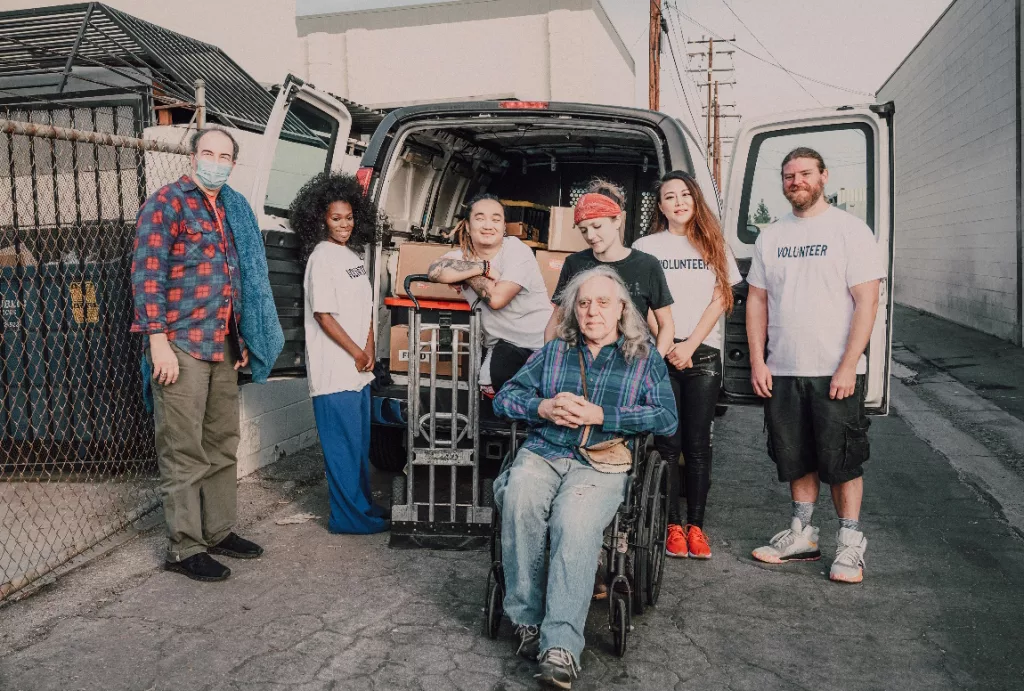
Food drives are an excellent way to help those in need and make a difference in your community. By hosting a fundraising food drive, you not only provide food for people who are struggling but also raise awareness about ending hunger. Whether your nonprofit is hosting a food drive for the first time or has been involved in food drives, it’s essential to know how to organize and promote a successful fundraising event.
So, keep reading for everything you need to know about hosting a fundraising food drive, including the importance of food drives, what to donate, and how to plan a food drive in 7 simple steps.

What We’ll Cover
What is a Food Drive?
A food drive is a community fundraising event where individuals, organizations, and local businesses collect non-perishable food items to donate to those in need. The collected food is usually given to local food banks, shelters, or other organizations that distribute food to impoverished individuals and communities.
Why Are Food Drives Important?
A well-run food drive helps alleviate hunger while bringing attention to the larger issue of food insecurity. Food drives often pave the way for further cooperation with local businesses and food banks.

What is a Virtual Food Drive?
If you’re looking for an alternative to a traditional food drive, how about organizing a virtual food drive? Virtual food drives (also called digital food drives) support food banks and families facing food insecurity through fundraising efforts. Money is raised online via a crowdfunding website, and the funds raised are used to purchase food for needy individuals. A virtual food drive is a great option if you don’t want to manage the logistics of collecting donations in person, cannot deliver donations to a local food bank, and want to extend your outreach.
Benefits of Hosting a Virtual Food Drive
A virtual food drive is a great alternative to a traditional in-person food drive for several reasons:

- Increased reach: A virtual food drive can reach a wider audience, as supporters can make a donation from anywhere with an internet connection.
- Convenience: A virtual food drive eliminates the need for physical collection, sorting, and transportation of food donations, making it a more convenient option for donors and organizations.
- Real-time updates: A virtual food drive allows for real-time updates on the progress and impact of the drive, engaging supporters and keeping them informed.
- Cost-effective: A virtual food drive is a cost-effective option as it eliminates expenses associated with physical food drives, such as transportation and storage costs.
Find out more about the Benefits of Virtual Fundraising.
Hosting Virtual Food Drives in 6 Simple Steps
Hosting a virtual food drive is an easy way to engage your community and raise funds for those in need when in-person events are not possible or desired. Follow these six simple steps to hosting a successful virtual food drive:

- Choose an online fundraising platform for your virtual food drive.
- Set a goal and create a campaign page with information about the food drive, its mission, and why it’s important.
- Share the virtual food drive with your network through social media, email, and other channels.
- Encourage supporters to donate online and share the campaign with their friends, coworkers, and family.
- Keep supporters engaged and informed by regularly sharing updates on the progress of the drive and the impact of their donations.
- Celebrate your successes and thank your supporters for their generosity. With a virtual food drive, the possibilities are endless, and the impact can be significant!
How to Organize a Traditional Food Drive
Hosting a food drive is a rewarding and impactful way to support your community and make a difference in the lives of those in need. Follow these seven simple steps to ensure your food drive is well-organized and maximizes its impact.
Step 1: Assemble a Food Drive Planning Team
Assembling a food drive team is the first crucial step in hosting a successful fundraising event. Here’s why:

- A team approach allows for the division of tasks and responsibilities, making the process much smoother and more efficient.
- Having dedicated individuals or groups to handle tasks such as promotion, collection, sorting, and delivery ensures that all aspects of the food drive are covered and allows for better time management.
- A team also brings new ideas and perspectives to the food drive, making it more creative and impactful.
In short, having a strong and motivated food drive team is critical to the success of your nonprofit’s fundraising efforts.
Step 2: Set your Food Drive Goals

Before you start planning your food drive, it’s important to set a goal for the event. This could be a specific number of items you hope to collect or a dollar amount you hope to raise. Having a goal and a solid action plan will help to focus your efforts and measure your success. Ask local food banks, shelters, and pantries about their needs to decide which organization to donate to – during winter months, when food insecurity rises, most groups would welcome your fundraising efforts.
Step 3: Choose a Date and Location

The next step in organizing a successful food drive is to choose a date and location. Consider factors such as the time of year, the weather, and any other events happening in your community when selecting a date. Maybe try it for a month or at least a week and get people enthusiastic about giving by having a theme around it, like Thanksgiving, Christmas, or even the Fourth of July. You’ll also want to choose a convenient location for donors, such as a grocery store, community center, school, or church.
Step 4: Recruit Volunteers
You’ll need help making your food drive a success, so start recruiting volunteers as soon as possible. Reach out to friends, family, donors, and community groups to ask for their support. You may also consider working with local businesses or schools to get more people involved.
Step 5: Promote Your Event
Promoting your food drive is essential to its success. Remember, the more people know about it, the bigger the impact you can make.
Consider these promotion tips for your food drive:

- Use social media, like creating a Facebook page and adding engaging InstaStories
- Design posters and flyers to get the word out
- Ask local newspapers and radio stations to help spread the word
- Advertise your event on your fundraising page
- Set up a peer-to-peer campaign to leverage your friends’ and coworkers’ support. Generate money and awareness by urging your friends (and friends of friends) to think of inventive ways to contribute.
- Send an email or letter to local businesses and organizations, asking them to participate in and promote your event.
Step 6: Collect and Sort the Collected Food
On the day of your food drive, have plenty of volunteers to help collect and sort the food. You may also want to provide food drive collection boxes to make it easy for donors to contribute.
Step 7: Donate the Food and Celebrate Your Success
After your food drive, it’s time to donate the food to a local food bank, shelter, or other organization. You may also want to celebrate your success by hosting a gathering or event to thank your volunteers and supporters.
What to Donate to a Food Drive
Whether you’re hosting a physical or virtual food drive, it’s important to consider what types of food to collect.
The most in-demand items are:

- Canned goods, such as soups, pasta, and prepared food
- Cooking oils
- Peanut butter and jelly
- Cereal and granola bars
- Rice and beans
- Baby food and formula
- Toiletries such as shampoo, diapers, toothpaste, and toilet paper
Be sure to choose items with a long shelf life so organizations can store and use them after your food drive. It’s also important to consider the needs of the organizations you’re donating to. For example, some organizations may need baby food, formula, or diabetic-friendly items. It’s best to check with the organization you plan to donate to beforehand.
What NOT to Donate to a Food Drive
When donating to a food drive, it’s important to avoid items that are perishable, past their expiration date, or have been opened or damaged. These include items like:

- Fresh produce
- Dairy products
- Baked or homemade goods
- Items that are in damaged packaging, in glass containers, or have been opened and partially used
- Alcohol
By avoiding these items, you help ensure that the food collected is safe and usable for those in need.
Last Thoughts on Food Drives
Hosting a fundraising food drive is a great way for nonprofits to make a difference in their communities and support those in need. By following these simple steps and promoting your event effectively, your nonprofit can host a successful food drive that makes a real impact. Whether you’re an experienced food drive organizer or just starting out, the benefits of hosting a food drive are countless, and the impact can be profound. So gather your volunteers, set your goal, and start making a difference in your community through a food drive today!



![Write a Successful Fundraising Plan [Free Templates] Write a Successful Fundraising Plan [Free Templates]](https://www.dojiggy.com/files/sites/164/2022/11/Write-a-Successful-Fundraising-Plan-in-6-Simple-Steps-423x282.webp)
